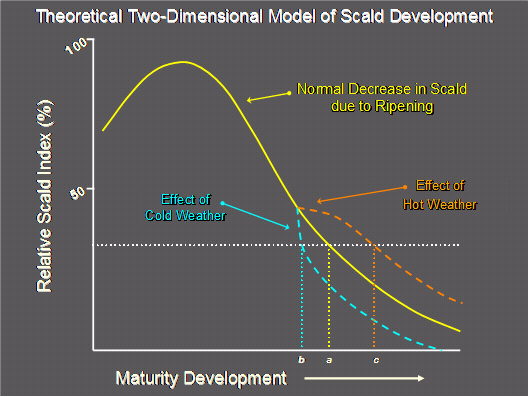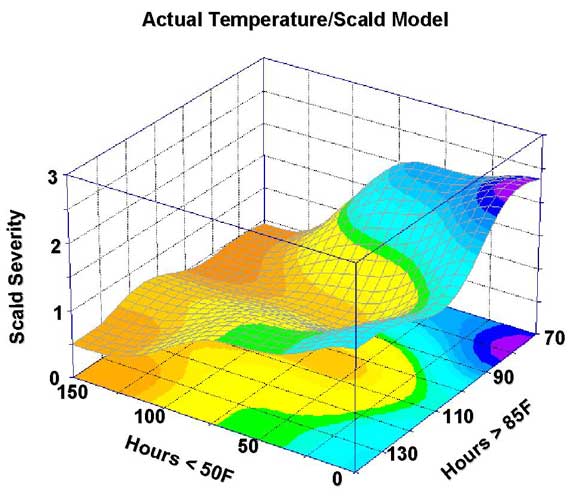Simply put, storage scald is the diffuse browning of the skin of apples or pears that appears after storage. It has also been called superficial scald and common scald. Storage scald is the most economically serious postharvest disorder of apples and pears.
The risk of storage scald is correlated with a number of preharvest factors, including:
- Variety
- Maturity
- Orchard temperatures
- Fruit color
- Nutrient content
- Fruit size
- Soil moister content
- Spraying (DPA; Ethephon)
The appearance of storage scald has been related to orchard temperature during the final weeks of fruit maturation. As the fruit is exposed to increasing periods of temperature below 50°F, the susceptibility to scald decreases. Dr. Eric Curry of the USDA-ARS has shown that when starch content is less than 3 (0 to 6 scale) and 150 hours below 50°F have NOT accumulated, scald potential is likely to remain high. If the starch progresses beyond 3, then maturity will begin to override the requirement for cool temperature and scald susceptibility will decrease. Generally, an uninterrupted accumulation of 150 or more hours below 50°F will result in fruit with low scald potential.
In addition to reporting accumulated hours below 50°F, the DAS scald model provides a graph of scald hours, a weather forecast, and orchard management activities based on current and projected conditions for each station.
 2-D Model of scald development (Eric Curry, USDA-ARS)
2-D Model of scald development (Eric Curry, USDA-ARS)
 3-D Model of scald severity based on orchard temperature (Eric Curry, USDA-ARS)
3-D Model of scald severity based on orchard temperature (Eric Curry, USDA-ARS)
For more information on storage scald, see:
